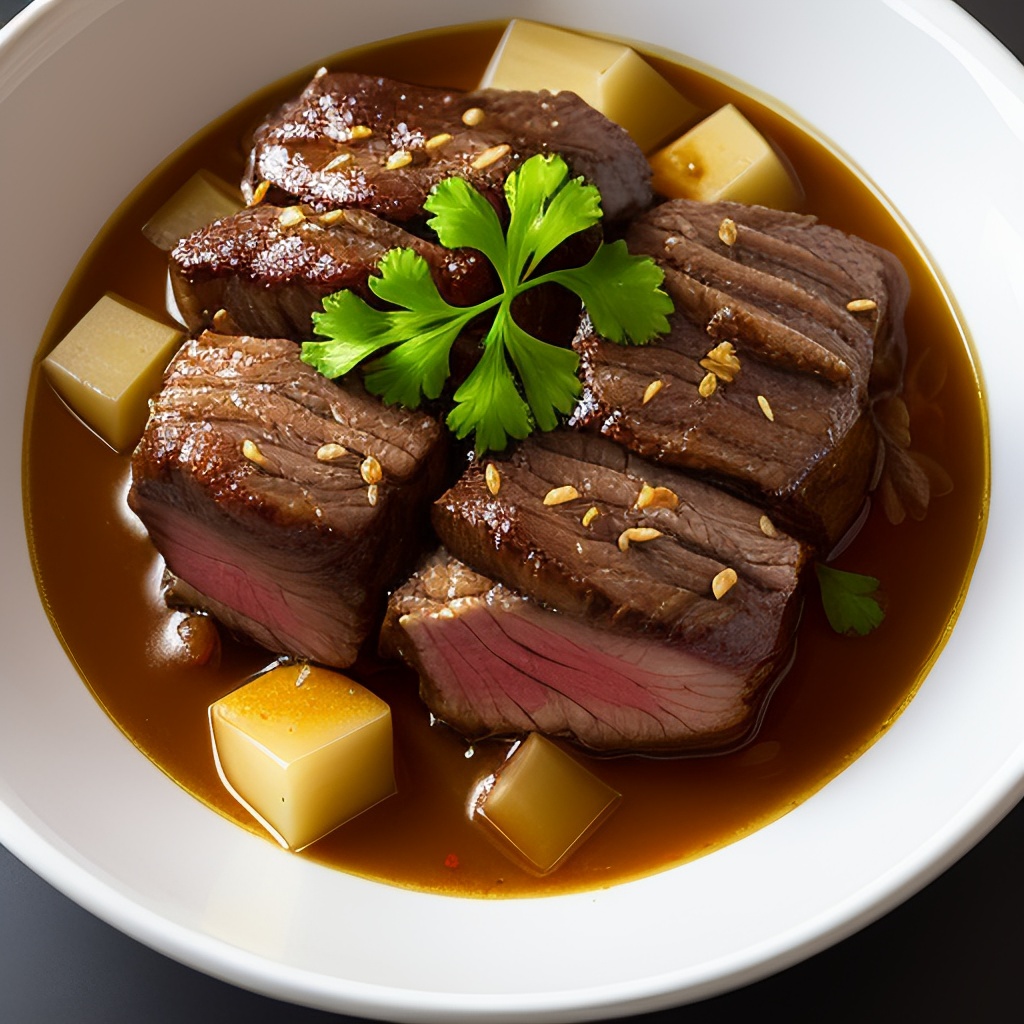Savor the Richness: Tender Slow-Cooked Beef with Rich Marrow & Juicy Fat
Introduction: There’s something undeniably comforting and luxurious about a plate of tender slow-cooked beef, enriched with the flavors of marrow and juicy fat. This dish not only promises a delightful culinary experience but also brings back memories of family gatherings and festive meals. Whether you’re a seasoned chef or a home cook, mastering this dish can add a star to your cooking repertoire. Let’s dive into how you can create this sumptuous meal in your own kitchen.
Ingredients / Preparation Materials
- 2 kg beef chuck or brisket
- 100g beef marrow bones
- 2 large onions, sliced
- 4 cloves garlic, minced
- 2 carrots, chopped
- 2 tablespoons olive oil
- Salt and pepper to taste
- 2 cups beef broth
- 1 cup red wine (optional)
- Fresh herbs like rosemary and thyme
Substitutes: If red wine isn’t available, you can use additional beef broth or a mix of balsamic vinegar and water for a similar depth of flavor.
Step-by-Step Guide
Preparing the Beef
- Season the beef generously with salt and pepper.
- In a large pot, heat the olive oil and sear the beef on all sides until golden brown.
- Remove the beef and set aside.
Cooking the Vegetables
- In the same pot, add the onions, garlic, and carrots. Sauté until they start to soften.
- Add the beef marrow bones and let them brown slightly.
Slow Cooking
- Return the beef to the pot and add the beef broth and red wine.
- Toss in the fresh herbs and bring to a simmer.
- Cover the pot and cook on low heat for 3-4 hours or until the beef is fork-tender.
- Adjust seasoning to taste and serve hot.
Tips & Tricks
- Enhancing Flavor: For a richer flavor, roast the bones in the oven before adding them to the pot.
- Avoiding Common Mistakes: Ensure the pot is not overcrowded to allow even cooking.
- Variations: Try adding mushrooms or potatoes for a more robust dish.
More Cooking Experience
Experiment with different cooking techniques like sous-vide to achieve even more tender beef textures. Also, grilling the beef briefly after slow cooking can add a delightful charred flavor.
Health Problems When Using Certain Ingredients
While delicious, consuming high amounts of fatty beef might increase cholesterol levels. Opt for leaner cuts if you have health concerns related to heart disease or cholesterol.
Choosing Where to Buy Fresh Food Depending on the Ingredients
For the best quality beef, especially when looking for cuts with marrow and fat, visit a reputable butcher who can provide you with fresh, ethically sourced meat.
FAQs
Can I replace almond flour with coconut flour? In this recipe, there is no need for flour. However, if using in another recipe, note that coconut flour absorbs more liquid than almond flour and adjustments may be needed.
Conclusion & Call-to-Action
In conclusion, mastering the art of cooking tender slow-cooked beef with rich marrow and juicy fat is a culinary journey worth taking. Dive into this recipe, experiment with the tips provided, and enjoy the hearty, flavorful dish with your loved ones. Share your experiences or ask questions in the comments below, and don’t forget to check out our other delicious recipes!
Essential Kitchen Tools for Efficient Cooking
A slow cooker or a sturdy Dutch oven is essential for making this dish, ensuring even cooking and maintaining low temperatures for hours.
The Importance of Proper Food Storage
Store leftover beef in airtight containers in the refrigerator to retain its moisture and flavors. Consume within 3-4 days.
Common Cooking Mistakes and How to Avoid Them
One common mistake is rushing the cooking process. Slow and low is the key to perfecting this dish, allowing the flavors to develop fully.
Understanding Flavors and Seasoning Techniques
Balancing the savory beef with aromatic herbs and a hint of wine can enhance the overall flavor profile of the dish.
Time-Saving Tips for Meal Prep
Prepare ingredients such as chopping vegetables the night before, and make larger batches to save for later meals.
